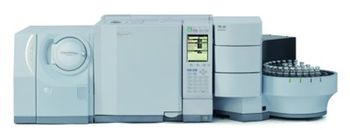
Shimadzu Scientific Instruments has released a new application note that presents Headspace-GC/MS as a potential alternative to the current official method of analyzing residual solvents in pharmaceuticals using Headspace-GC-FID. The note, titled “Analysis of Residual Solvents – Class 1, Class 2A, Class 2B – in Pharmaceuticals Using Headspace-GC/MS,” explains how this new method saves time in the lab by enabling simultaneous analysis of different classes of compounds and providing simpler confirmation of compound identity.
The USP General Chapter <467> on Residual Solvents specifies analyzing these compounds using headspace GC-FID (HS-GC-FID). However, this technique requires measurement to be performed as three separate analyses in order to achieve chromatographic separation within the three different classes of compounds; Class 1, Class 2A, and Class 2B.
With HS-GC/MS, complete chromatographic separation is not necessary, enabling all of the compounds to be analyzed in a single run. This can be done without compromising chromatography, precision, or analysis accuracy. The technique provides compound confirmation and qualitative information about unknown peaks through mass spectral library matching.
In addition to chromatographic fidelity and symmetric peak shapes, the HS-GC/MS method obtained an improved signal-to-noise ratio (S/N) for CCI4 as compared to the HS-GC-FID technique.
